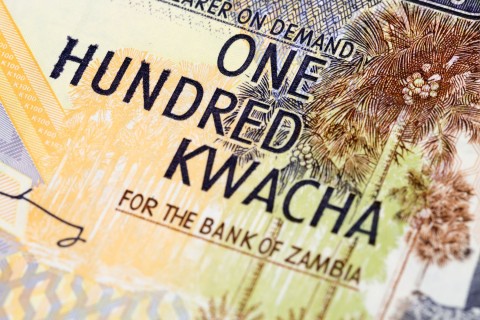CHINA’S waning growth effect on commodity-linked currencies and weak dollar supply continue to put the Kwacha and other regional currencies under pressure, financial market players say.
Although the South African rand and Kenyan shilling recorded marginal appreciation against the United States (US) dollar, the currencies remain volatile.
Zanaco Bank says the local unit is likely to remain weak in the near term as global challenges continue to weigh down the Kwacha.
On Monday, the Kwacha weakened to historic lows against the dollar hit by a myriad of factors including, limited greenback supply, depressed copper prices and a sharp drop in the Chinese stock market that fuelled an emerging currencies rout.
“From an open of K8.20 and K8.22, markets immediately witnessed strong dollar interest as the Kwacha plunged to an all-time low of K8.56 and K8.58. The Kwacha closed at K8.48 and K8.50, down 28 ngwee or 3.3 percent,” the bank says in its daily treasury.
The local unit saw some reprieve in the afternoon session as market players sold the greenback trimming the local currency’s losses.
However, First National Bank (FNB) anticipates the local currency to rebound in the short term with trading expected to be between K8.35 and K8.45.
FNB says the local currency witnessed a marginal appreciation towards the close of Monday’s trading session owing to the mines offloading dollars on the market.
“Copper is trading lower at US$4,960 a tonne and the dollar is king. US dollar exporter flows have reduced while demand for the greenback is on the rise.
“The Kwacha weakness was, nonetheless, overdone. This allowed the market begin to take profit. We also saw the mines show interest at the higher levels which helped the local unit recoup some of its losses and close the day at 8.52, the bank says in its market update,” the bank says.
The South African rand pulled back from record lows against the dollar after South Africa’s central bank said it will consider intervening in exchange markets to ease excessive volatility.
Reuters reports that the Kenyan shilling was also steady trading at 103.70 on the interbank to the dollar, but expected to stay under pressure due to increased liquidity in the money markets, and dollar demand from importers and foreign investors exiting the stock market.
The rand rose 0.11 percentage point versus the greenback to R13.18 after spiralling to its weakest-ever level beyond 14.00 as concerns over China’s economy deepened and wreaked havoc in emerging asset while the Nigerian naira and Ghanaian cedi traded at 198.37 and 4.36 against the greenback.

 JOIN DRIVERN TAXI AS PARTNER DRIVER TODAY!
JOIN DRIVERN TAXI AS PARTNER DRIVER TODAY!











